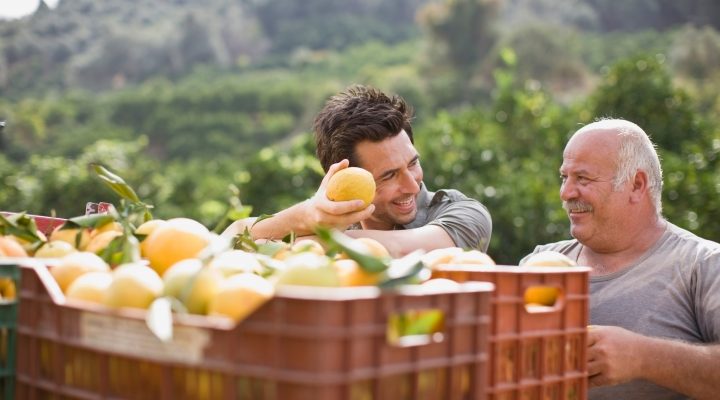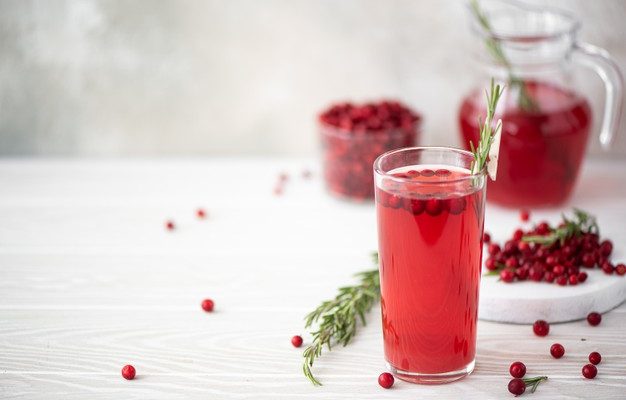With governments and health organisations shining a spotlight on fruit and vegetable consumption as a central part of a healthy lifestyle, consumers around the world are searching their supermarket aisles for products that can help them integrate vitamins, minerals and fibre easily into their diets.
As a result of the COVID-19 pandemic, the focus on nutrient-rich, natural produce has only intensified, and manufacturers are increasingly incorporating fruit ingredients into their fruit juices, smoothies, yoghurts and baked foods. Producing consistently high-quality, tasty fruit ingredients requires expertise, however, and a deep understanding of agronomy.
The very foundation of fruit production, agronomy is an exact science that allows ingredient suppliers to provide the best fruit and vegetable varieties in relation to growing conditions, customer requirements and processing needs. As a global fruit ingredient supplier, SVZ has a team of dedicated expert agronomists working in the fields year-round, ensuring that every fruit that passes along the supply chain meets the exact expectations of both manufacturer and consumer.
On demand
SVZ’s expert agronomy team was created in 2006, following an influx in special requests from customers. It was no longer the case that customers just wanted tasty purees, juices and NFCs – they now also wanted specific nutrients incorporated, particular colours and tastes, as well as safety credentials. “Take baby food for example,” says Anna Sereda, Corporate Agronomist at SVZ. “This application requires a strict quality grade to ensure that the final product is both safe and highly nutritional – and so the expertise of agronomists is required from the very start.”
The role of SVZ’s team of agronomists is diverse and evolving. Involved in guiding and supporting farmers from seed selection to harvesting, ensuring their compliance with specific credentials, agronomists need to be available to support and guide farmers at any time of the day or night. Wherever customers are in the world, be it in America, Europe or Asia, there are different regulations required for fruit ingredients – and agronomists enable these expectations to be met by working closely with farmers. Plus, they are also heavily involved with the P&PD (‘Process & Product Development’) team, who focus on new ingredient development and special customer requests, as agronomists have an important role in making their plans materialise.
Latest developments
“We are the link between farmers and the customers,” says Anna. “Whenever a new customer request comes in, we are the ones who are in the field, monitoring, observing and reporting, to ensure that their wishes are made a reality.” Such requests vary dramatically, from ensuring specific levels of a nutrient to changing the appearance of an ingredient. “For example, we have received requests from customers who are looking to alter the colour of vegetable ingredients for drink applications. Via several rounds of testing and modelling, our agronomy team can ensure that specific pigments are present in a vegetable to generate the required hue. This is exciting, because these colour varieties are being created in a 100% natural way, without the need for artificial colourings or additives.”
When the agronomy team isn’t looking at special customer requests, they’re harnessing science to ensure that every ingredient is consistently high-quality – for example, by analysing soil composition. “At SVZ, we also have a huge focus on soil analysis – we go into detail with regard to understanding exactly the composition of soil and how it can be improved to ensure the best possible output,” says Anna. “Based on analyses, we can determine the estimated amount of mineral nitrogen released during the growing season, for example, allowing farmers to then adapt the doses of fertilisers accordingly. Paying close attention to soil status is a practical way to assist growers in optimising their crops and ensuring healthy biodiversity in the fields.”
Looking ahead
All scientific fields are constantly changing and evolving, and agronomy is no exception. “One development we are seeing more of is farmers who want to be more specialised,” comments Anna. “In a competitive marketplace, agricultural specialisation is one way to increase volumes and yield, while simultaneously reducing costs. However, this comes with a need for advice and guidance and agronomists are perfectly positioned to offer this.”
“We’re also seeing a pronounced shift towards organic food worldwide, which is both a massive challenge and opportunity. Consumers are looking for healthier, safer and more wholesome meal options for their families. With concerns over food safety heightened during the COVID-19 pandemic, communicating supply chain transparency to audiences is a priority. And organic labels offer meaningful value for customers, representing more ‘natural’ farming. As agronomists, we can help farmers achieve organic status and make the changes they need to be both ethical and environmentally responsible.”
Amazing agronomy
As global consumers become more aware of the effect their food and beverage choices have on their health and the planet’s health, sustainable and nutritious fruit ingredients are only going to become more popular. Shifting to more environmentally responsible ways of growing – for example, with reduced reliance on chemical pesticides – can be challenging, and it’s therefore only with the expertise of agronomists that global farmers can make this shift to more ‘greener’ agricultural methods.
That’s why, for SVZ, agronomy is more than simply an ‘added extra’. It’s a fundamental part of our sustainable approach to agriculture, and we work closely and collaboratively with our farmer partners to ensure that they are guided and supported at every step of the process. For our customers, our approach to agronomy ensures that we can tailor our ingredients to meet their exact requirements – and meet rising consumer demand for more nutritious, tasty and ethical products.
SVZ International B.V. supplies high quality fruit and vegetable ingredients to food and drink manufacturers around the world. Its long heritage in agricultural supply, further supported by the world class facilities of its parent Royal Cosun’s farmer owned co-operative and accredited sustainability initiatives, ensure a consistent, premium quality ingredient supply. With more than 100 years’ experience in the global fruit and vegetable agribusiness, SVZ represents quality leadership throughout the whole supply chain. Its strong partnerships with local growers and production facilities within the world’s finest growing regions ensure SVZ fruit and vegetables are cultivated, harvested and processed to the highest standards.






